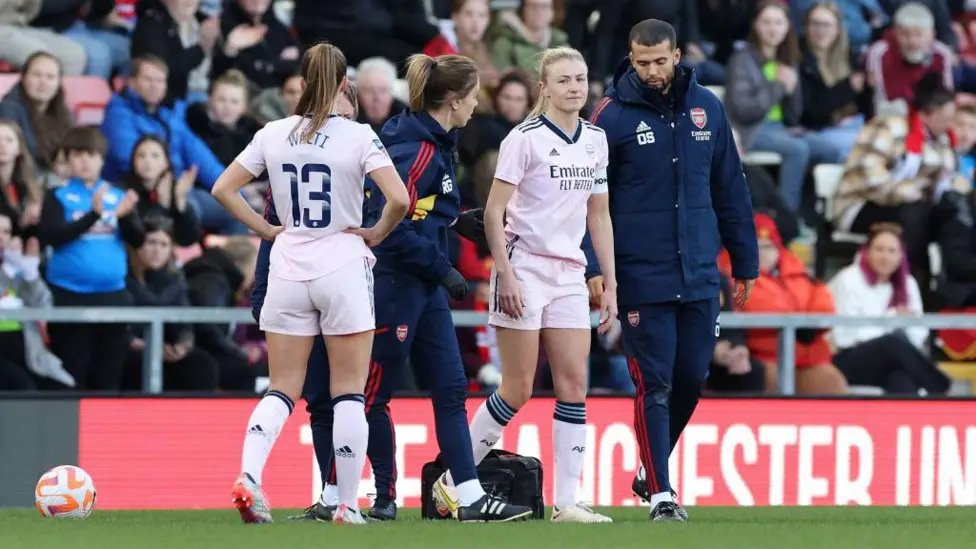FIFA is taking a major step towards tackling the surge of anterior cruciate ligament (ACL) injuries in women’s football by funding a pioneering research project to investigate whether hormonal changes during menstrual cycles could be contributing to the increased risk.
The year-long study, set to begin next month at Kingston University London, comes as the sport grapples with a troubling trend: female footballers are reported to be two to six times more likely to suffer ACL injuries than their male counterparts.
The study, led by Simon Augustus, senior lecturer in sport biomechanics at Kingston University, will closely monitor players from professional London clubs, including Fulham and Chelsea, as well as grassroots-level athletes. Participants will undergo regular blood tests and physical performance evaluations to track hormone levels—especially oestrogen and progesterone—throughout their menstrual cycles.
“We want to examine whether athletes may be more predisposed to injuries because of the functional changes in terms of their anatomy and physiology during the menstrual cycle,” Augustus explained.
“We know hormones fluctuate during different phases of the cycle, but we don’t yet know how much of an influence that may have on the risk of injury. Our goal is to bring clarity and potential prevention methods to the table.”
The research will simulate real-life football scenarios that often lead to ACL injuries—such as sharp turns, sudden stops, and jumping/landing during headers—and assess whether there’s a link between hormone levels and performance in those situations. The hope is to identify high-risk windows within a player’s cycle when ligament laxity or slowed neuromuscular response could increase the risk of injury.
High-profile ACL injuries have plagued the women’s game in recent years. England captain Leah Williamson missed the 2023 World Cup after suffering the injury with Arsenal. Teammates Beth Mead and Vivianne Miedema, as well as Australia’s Sam Kerr, have also endured long absences due to ACL damage.
While some ACL injuries are impact-related and deemed unavoidable, Augustus believes this research could be a turning point for non-contact injuries: “Those are the ones where we might have more chance to intervene—perhaps through tailored strength training or minor technical tweaks.”
This holistic approach is part of a growing awareness in the football world that women’s sports require more gender-specific research and support. In May 2024, a study conducted by University College London, University of Bath, and St Mary’s University found that muscle injury risk spikes significantly in the days leading up to menstruation. Among 26 monitored players, the likelihood of injury was six times higher during that premenstrual phase compared to when they were on their period.
These findings underscore the need for tailored training schedules and potentially even matchday planning to protect athletes during vulnerable periods.
In parallel, a separate three-year study—jointly launched by the Professional Footballers’ Association (PFA), Fifpro, Nike, and Leeds Beckett University—is examining environmental causes behind ACL injuries. This research focuses on external conditions such as inadequate facilities, limited staff-to-player ratios, training frequency, travel demands, and tight competition calendars.
Inappropriate football boots, poor pitch conditions, and generic equipment have also been highlighted as factors affecting injury rates in female players. Brighton chief executive Paul Barber revealed last month that the club is conducting its own study to ensure their new women’s stadium pitch meets standards suitable for elite female athletes.
The sharp rise in ACL injuries has drawn criticism for what many see as a “slow” response from governing bodies. Members of Parliament in the UK, as well as advocacy groups, have called for urgent, targeted investment in women’s sport science.
Fifa’s decision to fund the Kingston University study may now represent a turning point. By exploring the biological nuances unique to female athletes, the sport’s governing body is hoping to bridge the knowledge gap and protect the health of current and future generations of footballers.
The research could lead to more personalized injury prevention strategies—potentially revolutionizing how female footballers train, recover, and prepare for competition.
“This isn’t about overhauling how the game is played,” Augustus said. “It’s about giving women the same attention and resources that have long been afforded to men’s sport—starting with understanding their bodies better.”
As awareness grows and data emerges, the football world may soon find itself better equipped to reduce one of the sport’s most damaging and career-threatening injuries.


